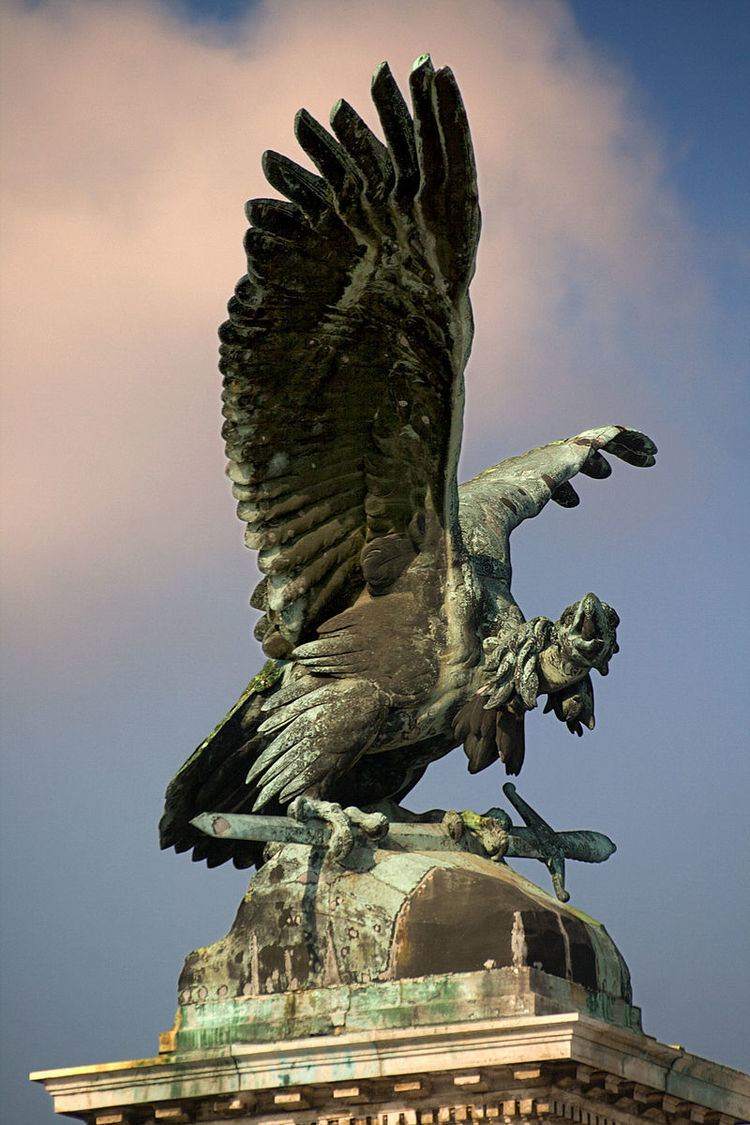 | ||
The Turul is a mythological bird of prey, mostly depicted as a hawk or falcon, in Hungarian tradition and a national symbol of modern Hungary.
Contents
Origin
The Turul is probably based on a large falcon, and the origin of the word is most likely Turkic: togrıl or turgul means a medium to large bird of prey of the family Accipitridae, goshawk or red kite. In Hungarian the word sólyom means falcon, and there are three ancient words describing different kinds of falcons: kerecsen (saker falcon), zongor [Turkish sungur = gyrfalcon] (which survives in the male name Zsombor) and turul.
In Hungarian tradition, it presumably originated as the clan symbol used in the 9th and 10th centuries by the ruling House of Arpad.
In the legend of Emese, recorded in the Gesta Hungarorum and the Chronicon Pictum, the turul is mentioned as occurring in a dream of Emese's as impregnating her, and in a second dream by the leader of the Hungarian tribes, in which eagles (the emblem of the Pechenegs) attacked their horses and a Turul came and saved them.
Modern use
The Turul is used as in the design of coats of arms of the Hungarian Army, the Counter Terrorism Centre and the Office of National Security.
There were 3 large Turul statues, each with a wingspan of 15 metres, in Greater Hungary (before the country had its borders reconfigured by the Treaty of Trianon). The last of the three stands on a mountain near Tatabánya, Hungary, but the other two were destroyed. It is the largest bird statue in Europe, and the largest bronze statue in Central Europe[1]. There remain 195 Turul statues in Hungary, as well as 48 in Romania (32 in Transylvania and 16 in Partium), 8 in Slovakia, 7 in Serbia, 5 in Ukraine, 1 in Austria. And one more as of 29 September 2012, St. Michael the Archangel's Day erected in Hungary's Ópusztaszer National Heritage Park
Some of the Kingdom of Hungary postage stamps issued after 1900 feature Turuls.
